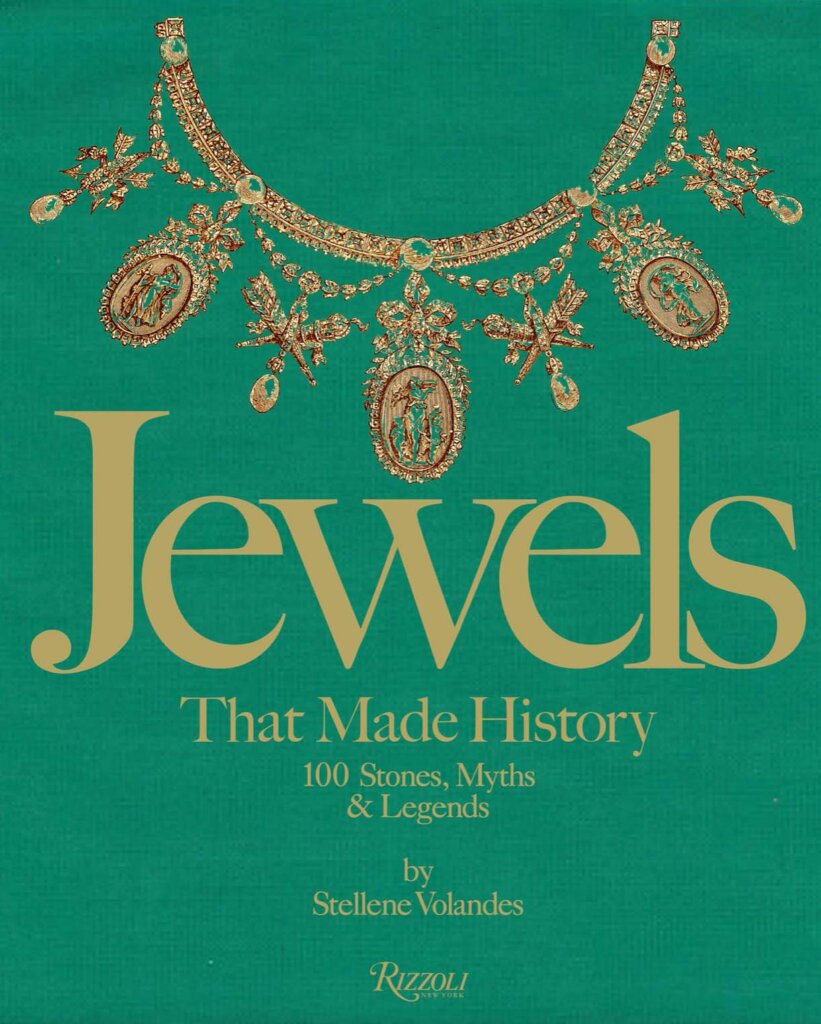News
Poly Context: Alumna Illuminates Dazzling Jewels in History

How did Catherine the Great use jewelry to exert power?
Alumna Stellene Volandes ’89, an internationally renowned expert on jewelry, answered that question and others posed by art students in a compelling discussion of the fascinating role of jewelry in history, art history, and fashion. Volandes, who is editor-in-chief of Town and Country and editorial director of Elle Decor, discussed researching and writing her book, The Jewels that Made History: 101 Stones, Myths, and Legends. The in-person event was part of Poly Context, a speaker series that brings experts, notable authors, and professionals to our campus to talk about events and a variety of topics and issues through a historical lens.
Volandes’ publisher, Rizzoli, describes the book this way: “From ancient treasures to royal weddings, great heists to the red carpet, this book is a stunning, surprising tour of historic turning points and gem-driven drama… Volandes tells the stories of how shiny stones and precious metals have determined empires, inspired expeditions and great crime, and been the communicator of status and ruin since ancient times. Each moment is placed in historic and relevant context, with Volandes drawing engaging parallels between Napoleon’s gift to Marie Louise at the birth of their son and the modern push present or the insouciant story behind the diamond sunburst brooch Jackie Kennedy famously wore to a 1962 State Dinner with the Shah of Iran.”
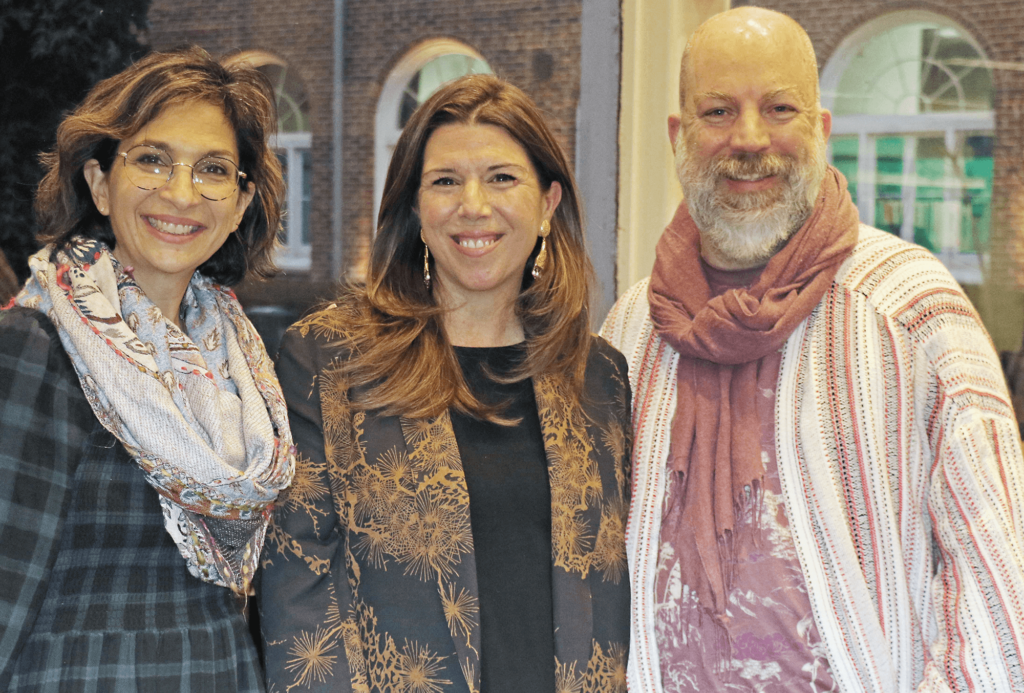
Laura Coppola ’95, P’29, P’35, Chair of Visual Arts Department, introduced Volandes, who said that Poly had been “life-changing” for her and credited the “DBQs,” a type of essay question, of history teacher Susan Beiles P’88, ‘90, ‘95, for making her a strong writer.
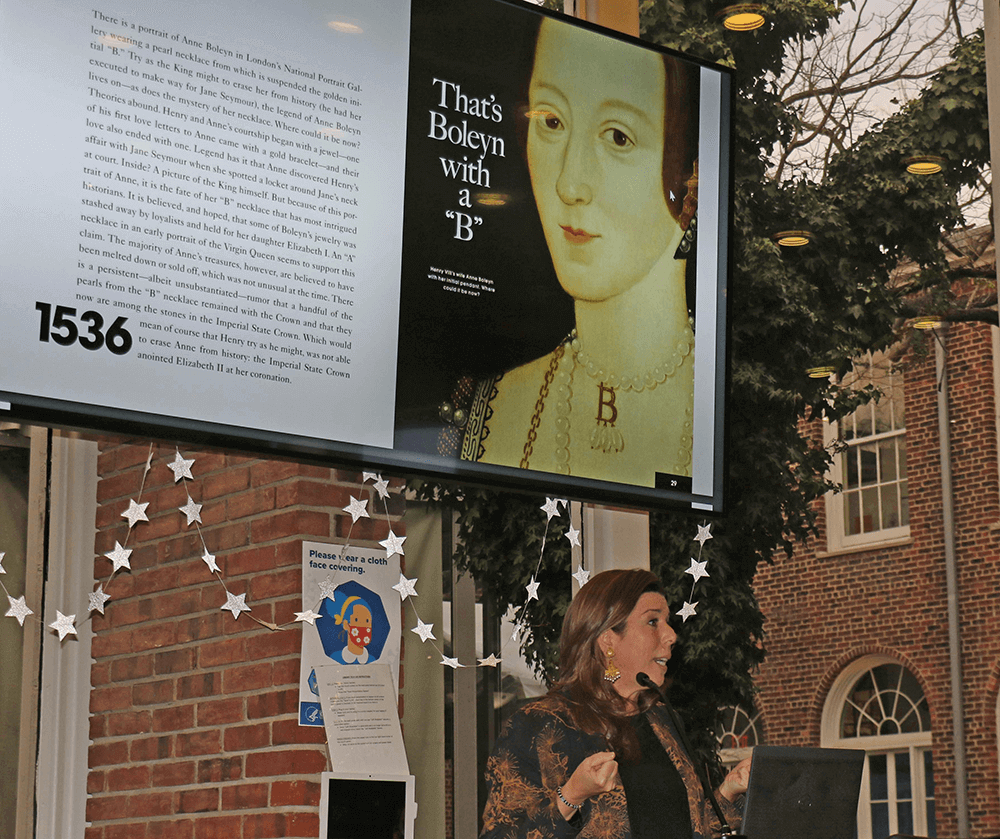
The Power of Jewels
Volandes then took her library audience on a lively tour of history using the lens of jewelry, illustrated by beautiful images from her book. Beginning with Queen Theodora in 529 AD and the “jewelry clause” of Justinian Law, she explained that people in power established their rank through jewelry. Even though Anne Boleyn met an untimely end, Volandes said, it is rumored that pearls from her B necklace are among stones today in the Imperial State Crown. After Napoleon conquered Italy, he and Josephine needed jewelry to go along with their new power, so he commissioned the Cameo in the Crown, which is still part of the Swedish royal family jewels. Volandes debunked the myth that opals are bad luck, which she attributed to diamond merchants who did not want to lose business.
“Sometimes jewelry design is a reaction to what came before,” Volandes said, “and sometimes it is a reaction to what is happening around it.” She offered the examples of Art Nouveau with the opening up of Japan and Art Deco after the discovery of King Tut’s Tomb. She added that Wallis Simpson, for whom King Edward VIII abdicated the British throne, “really brought style to jewelry design.” The Golden Age of Hollywood introduced big, bold styles; the moon landing inspired Cartier’s Sputnik brooch and Jackie Onassis’ Apollo earrings; Prince Charles saw the need for a modern crown for his investiture as Prince of Wales in 1969; and more “ready-to-wear” jewelry styles appeared as more women entered the workforce in the 1960s.
With humor, Volandes said that the “yoga pant index” was one of the best things to happen to jewelry. It gives people a “sense of identifying yourself by what you are wearing” if women are all wearing black leggings.
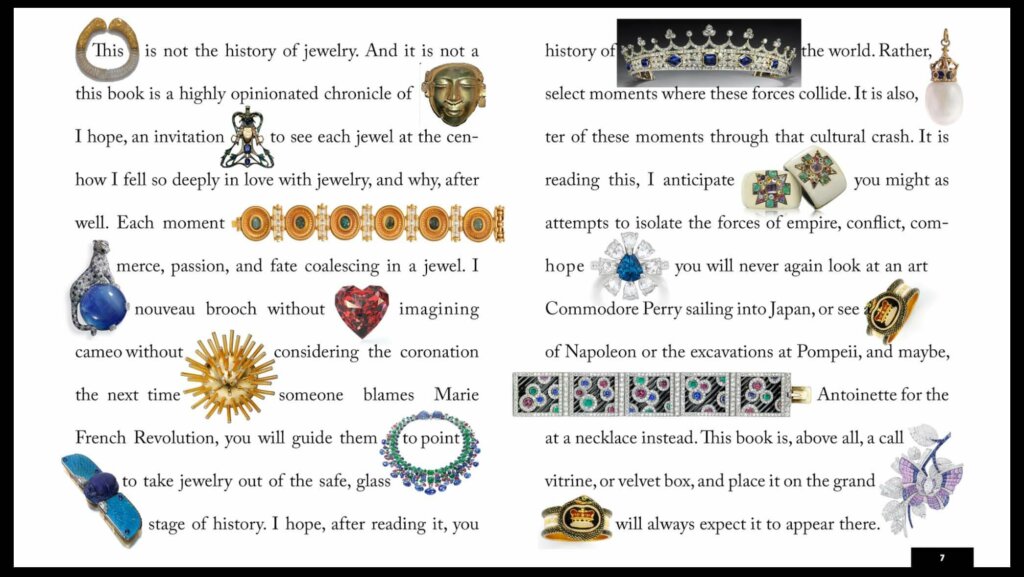

AP Art History and Fashion Club
In advance, Junie Blaise ’24 said, “I feel like jewelry has always been an important part of fashion. Just like fashion, jewelry also allows ways for people to express themselves and illustrate their style and personality, but also adding some pizzazz to an outfit or a look, whether it’s subtle or extravagant. I’m super excited to hear how she [Volandes] got into both writing and jewelry, while also learning more about how the book came to be and her reasoning behind the format of her book.”
What Students Wanted to Know
The Upper School AP Art History class and members of the Fashion Club had prepared questions for Volandes.
Lizzie Torigian-Gini ’23 asked, “Why were important or royal people’s jewelry influential, and how did the jewelry they wore inspire jewelers?” Volandes explained royals in times past were the ones who could afford to buy jewelry, which was made by hand. “They were the influencers of their day,” she said, like modern day Instagram celebs.

How royalty, like Queen Victoria, affected jewelry trends was of interest to Mia Gordon ‘23. After her husband died, Volandes said, Victoria only wore black clothing and black jewelry, which started “an era of jet jewelry.”
“Jewelry always seems to go with the idea of wealth, so what is jewelry’s role or its importance for the people who are comparatively not so wealthy or even in poverty?” Leo Yihan Wang ’23 asked. Volandes explained that it is a universal instinct to adorn ourselves with jewelry and through history people have used whatever they have found available to create jewelry.
“Why do you think that people spend so much money on pieces of jewelry that appear to be cheap, for example, in the early 1970s?” asked Keelin Walshe ’23. “Taste is subjective,” said Volandes.
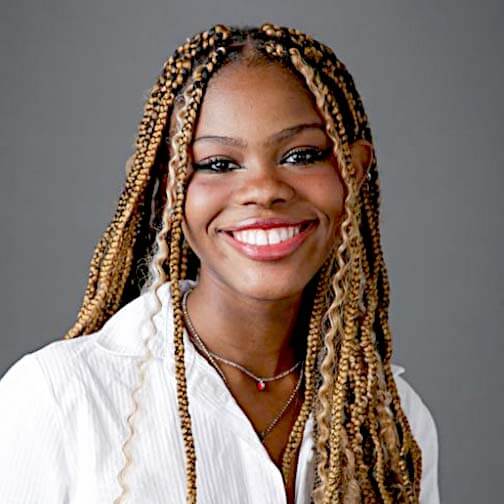
Wang also asked if jewelry liberated women or trapped women. Volandes said that throughout history women have “used jewelry to telegraph they are in charge.” For example, she said, Catherine the Great of Russia wore “extra emeralds” when she met with adversaries.
What is the role of pearls and have they been replaced by more precious gemstones, Sarah Cleophat ’22 wanted to know. Volandes explained that pearls are not what they once were since Mikimoto found a way to simulate them and “almost all are cultured pearls now.”
Volandes opened the questioning to the audience. Makiyah Turner-Hicks ’24 asked about the lovely layout of the book. Volandes credited Matt Berman, the book’s designer. She said she realized in putting the book together that the “success of the book would be decided by the photo choices.” She also commented on the untraditional, smaller size of the book, so “people could dip in and out of it” sort of like a dictionary of jewelry.
Speaking of Marie Antionette’s jewelry that came to Sotheby’s four years ago, Volandes said it looked as good as new. Walking through the MET, Volandes said, she saw pieces in the Egyptian wing “I could wear that night.” She added, “That strength and survival is part of its beauty.”

